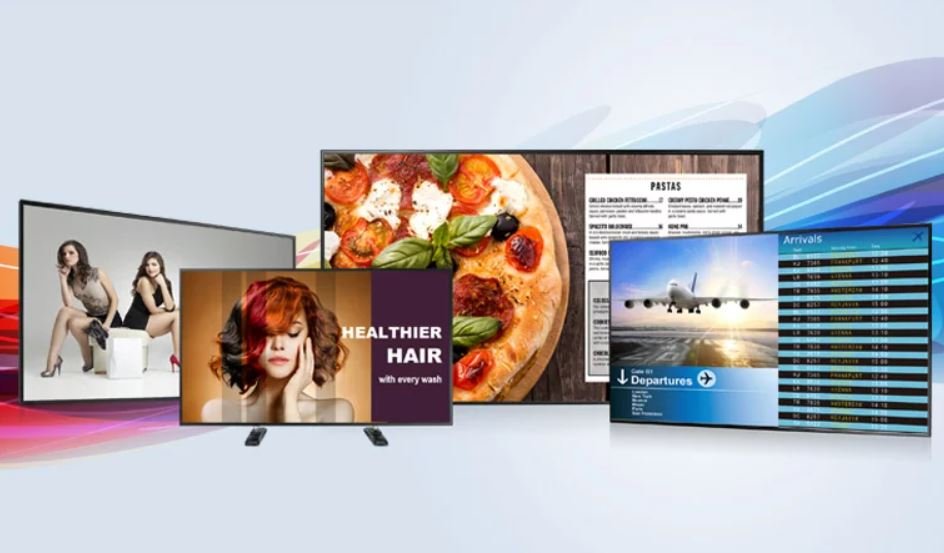In today’s fast-evolving digital landscape, digital signage technology has revolutionized product marketing. This cutting-edge tool is no longer just a method for displaying static advertisements but has become a dynamic and interactive medium that enables brands to engage with customers in more innovative ways. As businesses look to enhance customer experiences and drive sales, digital signage player stands out as a crucial technology.
What is Digital Signage Technology?
Digital signage refers to the use of electronic displays, such as LED, LCD, or projection screens, to present multimedia content in a variety of formats including text, images, video, and interactive elements. These displays can be found in numerous locations—retail stores, airports, hotels, corporate buildings, and public spaces—providing real-time information, promotions, and messages to targeted audiences.
With digital signage, businesses have the ability to display customized messages and adapt their content based on time, location, or user engagement, providing a highly flexible marketing solution.
The Role of Digital Signage in Product Marketing
The integration of digital signage into product marketing strategies has proven transformative. Businesses can now deliver real-time product updates, promotions, and personalized advertisements directly to consumers, making it a powerful tool for influencing purchasing decisions.
1. Enhanced Visual Appeal
Digital signage offers unparalleled visual engagement, transforming the way products are presented to consumers. With vibrant, high-resolution displays, marketers can showcase product features in a visually appealing manner, grabbing the attention of potential customers.
The use of dynamic content—such as videos, animations, and interactive elements—goes beyond static advertising. It creates an immersive brand experience that can hold the customer’s attention for longer, ensuring better recall and higher conversion rates.
2. Real-time Adaptability
One of the primary advantages of digital signage is the ability to update content in real-time. Whether it’s a flash sale, limited-time promotion, or an update on product availability, businesses can immediately adjust their messaging. This flexibility ensures that businesses can respond swiftly to market trends or customer behaviors, keeping their marketing efforts highly relevant.
Digital signage can be programmatically controlled, allowing for timed content changes based on various factors such as time of day, weather conditions, or seasonal events. This real-time adaptability allows marketers to deliver contextually relevant messages, enhancing the effectiveness of campaigns.
3. Targeted Marketing
Digital signage offers a powerful way to implement targeted marketing strategies. With advanced analytics and data-gathering technologies, businesses can display personalized content based on customer demographics, shopping behavior, and location-specific data. For instance, interactive digital kiosks can be programmed to suggest products based on past purchases or preferences, tailoring the customer’s shopping experience to their individual needs.
This kind of targeted, data-driven marketing ensures that businesses aren’t just broadcasting generic advertisements, but are providing content that resonates with specific audiences, making the marketing more efficient and cost-effective.
Boosting Engagement with Interactive Digital Signage
One of the most transformative features of digital signage is its ability to engage customers directly through interactive displays. Touchscreens, gesture recognition, and even mobile device integration allow customers to interact with the content, creating a unique, personalized experience.
1. Product Discovery
Interactive digital signage encourages customers to explore product details on their own terms. For example, in a retail environment, customers can use touchscreen displays to browse through the store’s catalog, read detailed descriptions, watch demo videos, or compare features between products. This helps customers make more informed purchase decisions and increases their likelihood of converting.
2. Increased Dwell Time
When customers engage with interactive digital signage, they tend to spend more time in-store or at the point of sale, thus increasing dwell time. The longer a customer engages with your brand or products, the higher the chance of a purchase being made. Digital signage not only entertains and informs but also encourages customers to stay longer and explore more.
3. User-Generated Content Integration
Another powerful way to leverage digital signage is through the integration of user-generated content (UGC). Businesses can encourage customers to share their experiences on social media platforms using specific hashtags, which can then be displayed on in-store signage in real-time. This creates an interactive and community-driven marketing approach that boosts brand loyalty and social proof.
Cost Efficiency and Sustainability
In addition to its marketing prowess, digital signage is an eco-friendly and cost-efficient solution for businesses. Traditional print advertising requires physical materials that become obsolete once the promotion ends, resulting in waste and ongoing costs for reprints. Digital signage, on the other hand, allows for instant content updates without the need for physical materials, significantly reducing both waste and costs.
Furthermore, as digital signage technology becomes more affordable, the initial investment is outweighed by the long-term benefits. Not only can content be updated with ease, but there are also fewer maintenance costs compared to traditional advertising methods.
Analytics and Measuring Effectiveness
One of the key advantages of digital signage in product marketing is the ability to track performance metrics. By integrating digital signage with analytic tools, businesses can measure engagement levels, dwell time, and conversion rates in real-time. These insights allow companies to optimize their marketing strategies and better understand customer behavior.
Moreover, businesses can conduct A/B testing to determine which content or campaigns are most effective, continuously improving the effectiveness of their digital signage efforts.
Future Trends in Digital Signage Technology
As AI and machine learning technologies continue to evolve, the future of digital signage looks even more promising. These advancements will enable even more personalized and data-driven marketing efforts. For example, AI-powered facial recognition may allow displays to identify a customer’s age or gender and present personalized product recommendations accordingly.
Additionally, augmented reality (AR) is expected to become a significant trend in digital signage, enabling customers to visualize how products will look or function in real-world settings, right from the store. These trends will further enhance the ability of digital signage to captivate audiences and transform the product marketing landscape.



